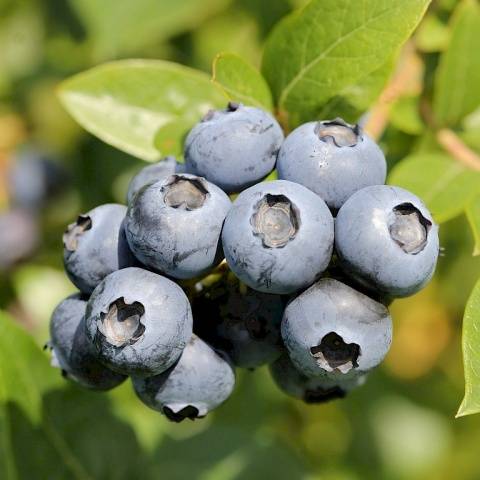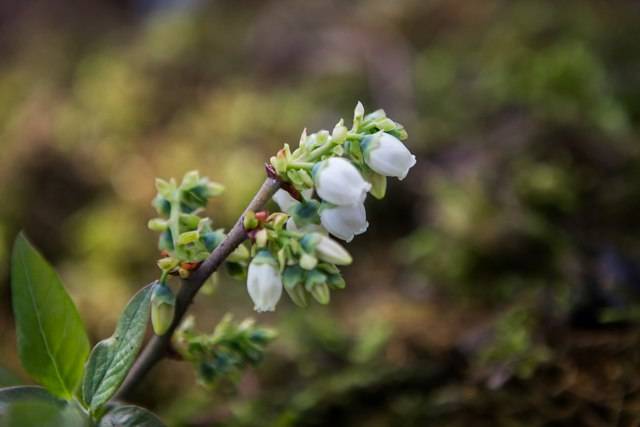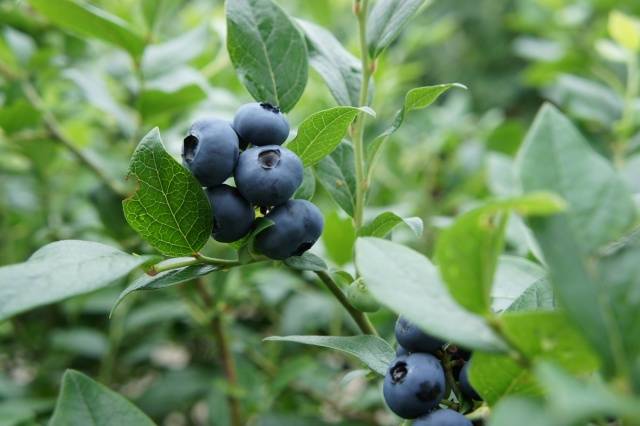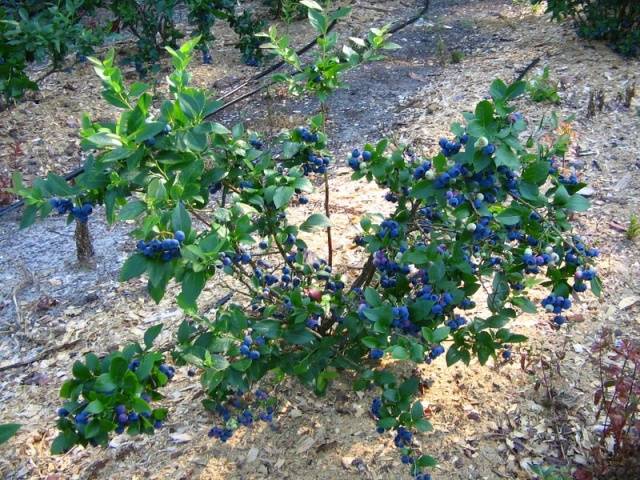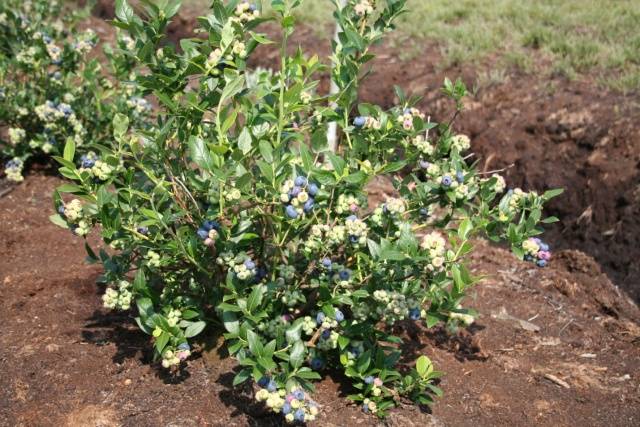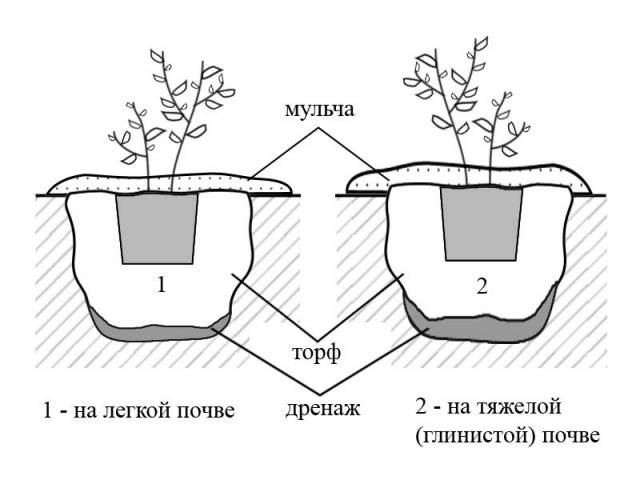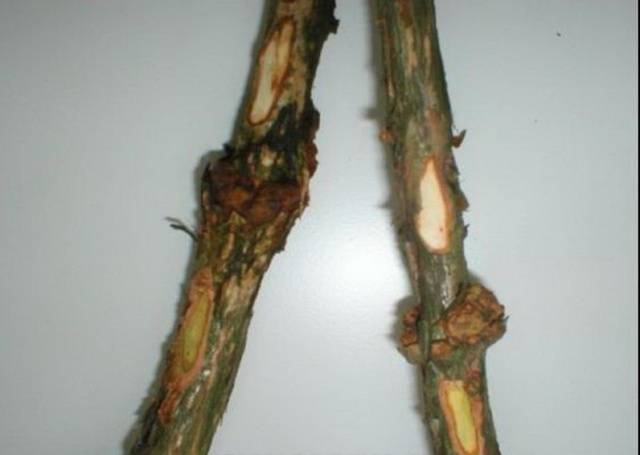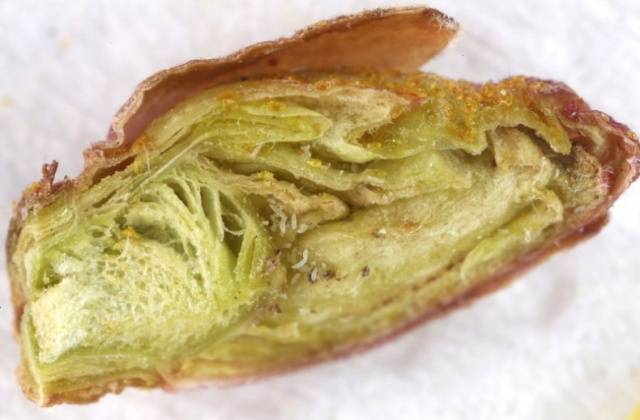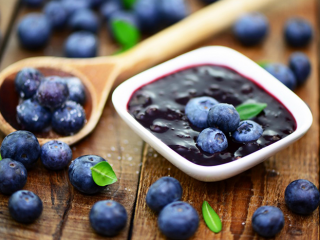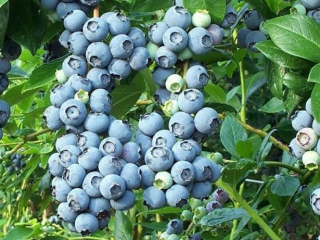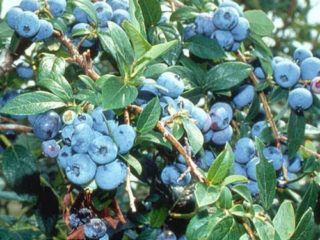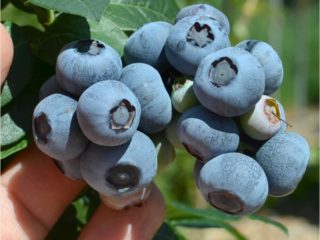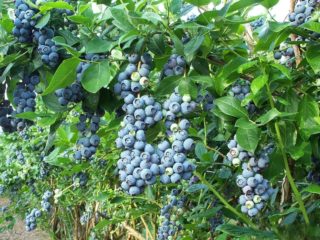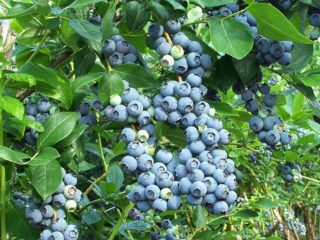Content
North Blue blueberry is a mid-early hybrid that produces a bountiful harvest of large and tasty berries, despite its short stature. The plant is winter-hardy, suitable for growing in harsh climatic conditions. Caring for blueberries is easy.
History of selection
The North Blue blueberry variety has been bred by breeders in the USA as part of a cultural propagation program since 1973. The parents are called seedlings US-3, G-65, Asworth. An intermediate hybrid of tall species and narrow-leaved Canadian blueberry is particularly frost-resistant.
Description of the berry crop
The hybrid amazes with its abundant harvest of fruits, so it quickly spreads in regions with a short warm season.
General idea of the variety
The bush rises only 60-90 cm.The blueberry root system is fibrous, densely branched, and located in the upper soil layer. A hybrid of medium vigor, produces up to 5 young shoots per season. Straight, powerful skeletal branches radiate to the sides, forming a spreading crown, which in circumference is approximately equal to the height. The annual growth of North Blue blueberries is from 30 cm, green in color with a matte effect. Old branches are light brown. The leaves are ovate, pointed, glossy on the upper side of the blade, 4-6 cm long. On the side branches of blueberry bushes, flower panicles are formed, 6-10 white-cream flowers of a beautiful bell-shaped shape.
Berries
In the clusters the fruits are collected in a heap. North Blue highbush blueberries have large berries with a small ridge. The fruits are from 15 to 18 mm wide, weighing up to 2.5 g. The pulp of North Blue fruits has a dense structure, attractive taste, aromatic, sweet, without cloying, with a slight sourness. Tasters gave them the highest rating.
A special feature of the berries of the North Blue hybrid is the high content of pigments of the glycoside group - anthocyanins. Under their influence, the durable skin of the berries acquires a rich shade of ultramarine, with a waxy coating on top. 100 g of dry North Blue berries contain 6.73 g of anthocyanins, which exceeds the characteristics of other blueberry varieties by 2-3 times. These are not just coloring substances, they are active antioxidants.
Characteristic
The compact North Blue bush is popular for its unpretentiousness and sufficient decorativeness.
Main advantages
The variety is grown in regions where tall blueberries freeze slightly. The bush can withstand up to -35 OC. Frost resistance decreases in snowless winters.At the same time, the hybrid, created on the basis of low-growing species, is moderately resistant to drought and can withstand short-term drying out of the soil. In hot summers, plants are watered. According to reviews of North Blue blueberries, the plant develops well in acidic light soils and is undemanding in care. Ripe berries are stored for 10 days, they have a dry detachment from the stalk, and are suitable for transportation.
Flowering period and ripening time
North Blue blueberry buds bloom in late May, flowering lasts up to 20 days. The ovaries mature within two months. The fruits are harvested from late June or early August to September. The ripening of blueberries is affected by spring frosts, air temperature, soil moisture and the presence of mineral fertilizers.
Yield indicators, fruiting dates
Descriptions of the North Blue blueberry mention its self-fertility, but many gardeners still advise planting several bushes of the crop nearby. Due to cross-pollination, the yield increases significantly, and a lonely bush produces only a third of the berries from the total number of flowers. In addition, observations show that the fruits on plants surrounded by neighboring blueberry bushes are sweeter and more tender. North Blue bears fruit consistently every year; from 1.2 to 2.5 kg of berries are collected from the bush per season.
Signal berries are formed under good conditions and in the first season after planting. Experienced gardeners recommend giving blueberries the opportunity to grow wood and break off the ovaries. The bush begins to bear fruit in the 2-3rd year.
Area of application of berries
Blueberries are useful fresh or in the form of fresh juice.The berries are made into jam, compotes, and frozen. Used as a fragrant filling in pies.
Resistance to diseases and pests
According to the characteristics of the variety, North Blue blueberries are not susceptible to diseases such as anthracnose, moniliosis, white spot, and gray rot that affect berry bushes. The plant is protected from aphids, various caterpillars and mites, and beetle larvae.
Advantages and disadvantages of the variety
The obvious advantages of the shrub contribute to its spread:
- frost resistance;
- high consumer qualities of fruits;
- productivity of a relatively compact bush shape;
- decorativeness of the plant.
The requirement for a sunny planting location is considered a disadvantage of the variety.
Landing rules
The hybrid will grow well and produce a bountiful harvest if planting rules are followed.
Recommended timing
Spring is the best time to move blueberries into the garden. Plants in containers are also planted later, at the beginning of summer. In warm climates, North Blue blueberries can be planted in the fall, with a long interval until frost sets in to allow the bush to become established.
Choosing a suitable location
Although the low shrub was bred on the basis of wild plants from wetlands, garden blueberries require completely different conditions:
- well-drained light soils, preferably peat bogs, sandy or loamy soils, and good light without partial shade will ensure the expected berry harvest;
- using testers, it is necessary to analyze the acidity of the soil in the garden - optimal pH values: 3.8-5;
- groundwater depth is not higher than 60 cm.
Soil preparation
North Blue blueberries should be planted in a carefully prepared substrate if the garden soil does not meet the requirements of the variety.A pit 70 x 70 cm wide is prepared so that a 30-50 cm layer of high-spread red peat can fit. Or prepare a substrate from 3 parts of peat, 1 - leaf, 2 - coniferous soil. 10 cm of drainage is placed at the bottom.
Selection and preparation of seedlings
The stems of a healthy North Blue shrub are elastic, the buds are alive, and the bark is without damage. If the seedling is purchased in a container, it is soaked in water for several hours before planting. The roots are straightened out, because in cramped conditions they become lumpy.
Algorithm and landing scheme
Before planting, hammer in a peg to tie up the stem:
- the prepared seedling is deepened into the hole, straightening the horizontally woven roots in an earthen coma;
- the root collar is 5 cm below ground level;
- sprinkle with substrate, compact, water, mulch with pine needles or pine sawdust;
- seedlings above 40 cm are cut to 100-120 mm.
Subsequent care of the crop
Growing North Blue blueberries requires the gardener to pay attention to pruning and mulching the tree trunk.
Necessary activities
North Blue blueberries are watered during periods without rain, 10 liters per bush every 2-3 days. The soil is moist, but without stagnant water. A variety planted in the south requires sprinkling 2 times a week or more often during hot weather. For fertilization in the spring at the beginning of flowering and the creation of ovaries, ammonium and potassium sulfates or minerals in a special complex are used.
Shrub pruning
In early spring, sanitary and formative pruning is carried out. The latter type is used after a bountiful previous harvest to relieve the bush.
Preparing for winter
Despite the fact that the North Blue blueberry variety is frost-resistant, the bushes are covered in autumn in regions with little snow.Wrap the shoots in agrotextiles to protect them from icing. The mulch layer is raised.
Collection, processing, storage of crops
Planting and caring for North Blue blueberries is simple, and the hassle of processing the berries is pleasant. The fruits are collected over a month; they are stored in the refrigerator for up to 10-14 days.
Diseases and pests, methods of control and prevention
Diseases | Signs | Treatment | Prevention |
Viral red leaf spot | Red spots, small shoots and leaves | Removing the plant
| Control of insects and ticks, vectors: “Karbofos”, “Fufanon” |
Stems cancer | Brown spots, cracks and ulcers on the bark | Removing shoots | Pruning according to the rules. Spraying with Bordeaux mixture |
Pests | Signs | Struggle | Prevention |
Kidney mite | Galls on branches | Iron sulfate, Nitrafen | Cleaning up fallen leaves and affected shoots |
Flower beetle | Fallen buds | "Intavir", "Fufanon" | Autumn cleaning |
Conclusion
North Blue blueberries are a winter-hardy and productive variety that can be not only a valuable fruit crop, but also an ornamental one. A low, compact shrub looks impressive in the second half of summer and autumn in a bright crimson decoration. Growing garden blueberries gives aesthetic pleasure and health.
